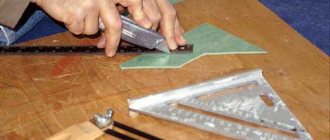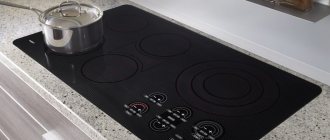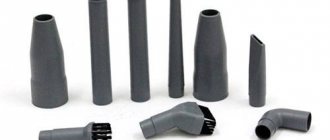Choosing the appropriate wear resistance class of linoleum
The material has the following varieties:
- Household linoleum (class from 21 to 34) is the most common type of flooring for domestic premises with low and medium traffic.
- Commercial (class 31 to 43) – suitable for installation in public places with high traffic. It is particularly wear resistant.
- Special – used in kindergartens, hospitals, sports institutions, etc.
We did not include semi-commercial linoleum in this classification, since there are no clear criteria for its characteristics, but marketers often call it improved household linoleum.
And yet, how to choose linoleum for the corridor? To begin with, let’s determine how much traffic there is in the hallway. Most often, it is small, but there is an additional load in the form of street dirt, shoes, bicycles and dog paws. For a corridor, most often you need an inexpensive floor covering without a backing, which is easy to install and dismantle. In a living space, it is important whether the floor matches the walls and furnishings, which means a wide range of designs is needed. The optimal choice for the hallway is household linoleum of class 22 or 23.
What thickness is better to choose
The class of linoleum determines its purpose and the degree of load it can withstand. It is usually denoted by a two-digit number. The first number is the purpose of the covering for the room. The second is the ability to withstand the load.
There are three main types of linoleum:
- Household, indicated by the number 2. Suitable for some rooms of the house with low load: bedroom, living room.
- Semi-commercial, designated by the number 3. Can be used not only in residential premises, but is also well suited for offices, offices, and small warehouses.
- Commercial, designated by the number 4. Intended for industrial and public premises, shopping centers.
Semi-commercial type of material
Information. Manufacturers also have special types of coatings for medical institutions, gyms and other specialized premises. They should not be considered for a corridor, because they are more expensive and their functions have nothing to do with a residential building.
The second number in the designation of linoleum is responsible for the degree of load withstanding:
- Small.
- Average level.
- High.
- Very high.
For the corridor, experts advise choosing linoleum covering options with a thickness of at least 3mm. The exact characteristics of the canvas can be found on its label. Typically, a thickness of 3-4 mm corresponds to semi-commercial linoleum.
Special attention should be paid to the thickness of the top layer of protection. The corridor is periodically exposed to moisture and dirt, so the recommended layer is 0.25-0.3 mm. Everything also depends on the number of people living in the house; if there are 4 or more people living, then it is better to choose linoleum with a protection of 0.4 mm.
Layers of linoleum
And also pay attention, there is an article on the topic “What determines the thickness of linoleum and what thickness to choose for an apartment”
Linoleum base
In stores, in addition to the usual linoleum covering, you can also find options with an additional base. They differ in the material of the same base, and, a little, in properties.
- On a fabric basis. The basis of the coating is felt or artificial jute. Improves the thermal insulation properties of the floor and is completely safe for health;
- On a foam base. Long service life, moisture protection and affordable price. It is the options with a foam bottom layer that are better suited for the corridor in the apartment.
Conclusion. To the question, which is the best linoleum to choose for the hallway, based on its dimensions, the answer is a foam-based canvas with a protective layer thickness of 0.3-0.4mm and a total thickness of 3-4mm.
Choosing the best option
Assortment of colors of natural linoleum
Natural linoleum is a durable, wear-resistant, environmentally friendly coating, which, unfortunately, is not suitable for installation in the corridor.
Why? There is only one reason - low resistance to biological factors. That is, if ideal conditions are not created in the room, namely, constant room temperature and humidity from 45 to 60%, there is a high probability of mold and the onset of putrefactive processes. That is why manufacturers of natural linoleums do not recommend them for use in corridors and kitchens.
In the photo there is a relin with an anti-slip protector
Relin is a coating with unsurpassed wear resistance that could be used when arranging corridors, but:
- rubber linoleum cannot be purchased in every store, but most often only to order;
- the range of coating colors is small;
- There is a characteristic “aroma” of rubber during the first year of operation and this will not be entirely appropriate in the hallway of an apartment or country house.
Nitrocellulose linoleum is a suitable option only if the base of the floor is perfectly flat and you really like the color scheme of the coating. I don’t see any other special reasons to buy nitrocellulose coatings, and it’s becoming increasingly difficult to find this material on sale.
Alkyd (glyphthalic) linoleum is an excellent choice for the corridor, since the material is characterized by a low degree of thermal conductivity and abrasion resistance. Among the disadvantages of the material, we note that it is being produced less and less, in addition, it is brittle when bent.
PVC linoleum with felt lining
Polyvinyl chloride coverings are exactly that category of linoleum, among which you will certainly find something that you can lay on the floor in the hallway with your own hands.
Among PVC coatings you can find those materials that are equally resistant to abrasion, excess humidity and temperature changes. Since PVC products are the best choice for use in the corridor, let’s consider the parameters of this linoleum in more detail.
In accordance with the structure, polyvinyl chloride-based coatings are divided into the following types:
- homogeneous linoleum - uniform throughout the entire thickness;
- heterogeneous - multilayer linoleum.
What is preferable for the hallway?
The main advantage of homogeneous coatings is through-painting. As a result, even if the surface wears out, it is not noticeable. The rest of the material is ordinary PVC fabric.
That is, homogeneous linoleum is the optimal choice for rooms with increased mechanical load on the base. But, if you want to choose a coating to match the furniture or wall decoration, keep in mind that materials with a homogeneous structure have a limited range of colors.
Layer arrangement in a heterogeneous fabric
Heterogeneous polyvinyl chloride coatings are more technologically advanced materials that, due to their multilayer structure, demonstrate high strength and performance qualities. The structure of such materials can be over 5 layers, each of which is responsible for certain functions.
As a result, heterogeneous coatings dampen noise, since there is a special substrate for this, do not thin out over a long time, since there are reinforcing layers, and at the same time look great since this or that image is applied to a special second layer from the top.
So, the best option for flooring are linoleums made on the basis of PVC, especially since the installation instructions are simple and the price is low compared to analogues.
We suggest you read: How to wash suit trousers so they don’t shrink, how to properly clean a classic woolen item
When choosing a material for laying in the corridor, be sure to pay attention to the abrasion class and the class of application. These parameters can be found in the following tables.
| Abrasion class | Degree of wear resistance | The thickness varies no more than: |
| T | high | 0.08 mm |
| R | average | 0.15 mm |
| M | low | 0.3 mm |
| F | very low | 0.6 mm |
The table lists abrasion classes
| Application class | Type of premises / Load intensity |
| 2 | Living spaces; load intensity is low |
| 3 | public buildings; load intensity is average |
| 4 | production area; load intensity is high |
The table lists the application classes
https://www.youtube.com/watch?v=hiMNIf52Nwo
If your hallway has a perfectly flat floor, you can choose a coating without any base. But to extend the life of your renovation, we recommend that you purchase linoleum with a foam base.
Linoleum structure
For the hallway, it is best to choose material in dark colors or medium tones. Dirt and minor damage will be less visible on it. Variegated colors will allow you to hide floor flaws that appear during its use for a long time. Quartz chips applied to the surface of the linoleum for the hallway will make its surface anti-slip.
Linoleum, like any building material for floor finishing, has its own classification. It consists of two numbers: the first indicates the level of cross-country ability, and the second indicates the expected load on the floor. For a family of 4-6 members, coverage from grades 23 to 32 will be optimal.
Wear resistance classification
What you need to know when laying linoleum
To ensure that the finished coating looks attractive and does not have any unevenness or cracks in the joint area, it is important to perform the installation correctly. Key details to consider.
The base needs to be leveled. There are several ways to do this. Install a concrete screed, use plank flooring, or arrange the surface from chipboard or plywood sheets. The first option requires the most time and money, but is characterized by maximum strength and durability. The second one is cheaper, but the surface needs to be sanded and the joints need to be puttied. Creating a plywood covering or chipboard flooring is the cheapest solution.
To cover with linoleum, level the floor.
Linoleum needs to be prepared before installation. The material is cut, leaving a margin of 50 millimeters on each edge, and left in the room for 2-3 days so that it straightens.
When cutting, you need to pay attention to the ornament so that during installation there are no inconsistencies in the design.
Flooring is possible in several ways: without fastening, with fixation using double-sided tape or using a special adhesive composition. If there is excess left after installation, it is cut off, after which the plinth is installed. You need to leave a small gap between the walls and the linoleum.
Laying linoleum with your own hands: step-by-step instructions for work
Before gluing linoleum to the floor, you need to know one very important rule: for rooms whose area does not exceed 25 m², do not use an adhesive composition. Of course, this only applies to those cases when one solid or, in extreme cases, two pieces of material are used. In this case, it will be quite enough to fix the material under the baseboards. You can use double-sided tape at the joint.
The process of fixing linoleum with skirting boards
So, let's look at each step of the work in detail:
- Having made sure that the roll of linoleum, which you previously unrolled, has rested for a sufficient amount of time and has leveled off, we place it in such a way that one of the sides is located almost flush against the wall, and the gap is only 3-5 mm. The material should overlap slightly with respect to the remaining three walls.
- If the area of the room is large enough and it is impossible to use one sheet, you will have to work with the joints. First of all, attention should be paid to adjusting the joints so that these places look aesthetically pleasing. Only after this can you proceed directly to laying the pieces, again, not forgetting about some overlap on the walls. Very often the surface of linoleum has some kind of design, ornament or pattern. In this case, there is an additional need to combine the pattern at the joints. The most important thing is to do it properly in the middle of the room. This is also important if the pattern is repeated in the next room, and you need to combine it in the doorway. To do this, one of the sheets of coating must be shifted until the pattern matches.
- This stage is relevant if you have to work with several pieces of linoleum that have a pattern. Most often, the pattern imitates parquet or tiled flooring, that is, it consists of the intersection of straight lines. In this case, in order for the coating to look as neat as possible, these lines should not be located at an angle relative to the walls. Such linoleum will look beautiful only if the lines are located strictly parallel.
- After this, you need to adjust the linoleum to the ledges and niches that are in the room. In fact, you almost always have to deal with this, since niches under the window sill and in the doorway are common. In this case, in order to avoid mistakes and not spoil the material, you need to first measure the depth of the niche.
Related article:
Warm floor under linoleum, on a wooden floor
Possibility of installation on wooden floors. Technology for installing heated floors from infrared film under linoleum on a wooden floor.
How to cut linoleum in various cases: consideration of examples
As a first example, let's look at the features of working with a corridor. In this case, the first overlap, which should correspond in size to the depth of the niche, is made near the front door. To do this, you first need to simply measure the depth of the niche and wrap the corresponding section of the covering. Then all that remains is to carefully cut off the excess sections on the sides so that the remaining piece fits perfectly inside. In the same way, linoleum is adjusted to all other niches that exist.
Linoleum for the corridor: how to choose?
There are several color options for flooring for the interior of the corridor.
- Blue, Tiffany color and its combinations are the ideal color for the hallway, which visually expands the space, associating with open space.
This material is very resistant to abrasion, moisture, mechanical damage, dirt, and is easy to care for.
- Yellow, sand, cream tones also look good in the hallway, enhancing the illumination of the room.
When choosing, you need to pay attention to a number of factors, from appearance to brand and country of production.
- Orange, terracotta, brick color - suitable for the classic style of the hallway, preferably with imitation wood.
With proper care, the coating has a long service life.
- Green, marsh, grassy shades are universal for any type of room. Depending on the shade, it will help to narrow and expand the space, suitable for the Provence style.
Depending on the type, its thermal insulation characteristics are superior to laminate or tile.
- Brown, woody color is a symbol of peace, comfort and good quality. Ideal for flooring in a classic style.
Easy installation, which is important for those who decide to carry out repair work themselves.
- Black shade - this tone should only be used in combination with another shade, for example in a checkerboard pattern. Pairs well with white, turquoise and yellow.
It does not require an additional protective layer.
- White color - gives a feeling of lightness and airiness to the room; the ideal shade is bleached oak. The gray floor goes beautifully with the wenge-colored doors. Light shades combine with modern style.
Advantages include softness, elasticity and strength.
Dark floors will suit the hallway, where there is excellent lighting, otherwise it will create a feeling of lack of light. Light-colored furniture looks advantageous with dark floors. With plain wallpaper and light-colored furniture, you can lay rich, bright linoleum, the main thing is not to overdo it with colorful accessories. Scratches and dirt are not visible on such a floor.
The coating is resistant to acids.
If the apartment has a narrow and small corridor, then a lined covering will do. It should be laid across long walls. Linoleum with small tiles also looks good in a small hallway. A floor with imitation wood will create the effect of a high-quality and expensive coating.
Linoleum has high sound and heat insulation properties.
Material with imitation stone or tiles goes well with the classic design of the hallway; this option is worth choosing for a large room. Linoleum with unusual and colorful patterns in different colors is an excellent hall design solution for people who adore originality. Geometric patterns are becoming the choice of people who value classics and rigor.
The most budget option of all floor coverings.
You can experiment with the colors of the floors, choosing the best option for the interior of the corridor.
Choosing linoleum for the hallway
In the hallway, increased demands are placed on linoleum due to the proximity of the entrance to the apartment
All dirt and moisture remain on the floor, which is why it is extremely important to choose a high-quality floor covering. Linoleum is the most affordable floor covering, so the market provides different types of it, but how to choose the most suitable one?
There are natural and artificial linoleum:
- Natural is not afraid of moisture, scratches, dents. It is made from cork, adding linseed oil, wood flour and chalk with resin. If the coating is properly cared for, it will last for many years. The disadvantages include the high cost and small selection of material colors. In addition, in order to maintain its appearance, sometimes linoleum needs to be treated with a special mastic;
- The basis for artificial linoleum is polymer raw materials. It has a variety of colors and patterns that will suit any interior. It is moisture resistant and inexpensive. Caring for the coating is very simple; it can last about 20 years. Disadvantages include its sensitivity to temperatures and solvents, and the fact that over time it can become less flexible and crack.
The most suitable option for the hallway may be linoleum of a dark or semi-dark color, so the dirt brought from the street will not be noticeable. A variegated, heterogeneous color is also suitable; scratches and stains will not be visible on it. But the main characteristics of linoleum are wear resistance and a durable outer layer.
Thus, all existing types of linoleum can be divided into three groups:
- Household type of use;
- Semi-commercial;
- Commercial type.
For the hallway you should take a semi-commercial type. It is ideal for a room through which there is a flow of people. Furniture and sharp heels will not leave marks on it; this type of linoleum is difficult to damage.
Homogeneous or heterogeneous?
Synthetic linoleum can have one or more layers. Let's figure out which option is better to prefer.
Homogeneous - has no basis in its structure. It is homogeneous (thickness up to 3 mm), but quite durable. Its advantages:
- thanks to the rough surface, dirt and stains are invisible on it (which is important for the kitchen and hallway);
- with a protective layer and proper care, it will last up to 10 years;
- when laying it, the pattern is easy to follow, and if necessary, replace it with another piece;
- It is evenly painted throughout the entire thickness, so the pattern is preserved even with uneven wear.
It's worth choosing . if a lot of people live in an apartment, it is not afraid of high traffic. However, homogeneous linoleum should be laid on a perfectly flat base. In addition, the choice of colors is limited.
Heterogeneous - has several layers: a transparent substrate, a layer with a pattern, a base, impregnated fiberglass. Its thickness can reach 5-6 mm. Main advantages:
- resistance to mechanical damage;
- does not deform during installation;
- has a huge variety of designs, will fit into any style.
When choosing a heterogeneous material, pay attention to the thickness of the transparent layer - the resistance of the coating to external influences and durability depend on it.
Household or commercial?
Let's figure out which linoleum is best to lay in the kitchen . A logical question may arise: why buy a commercial version for home use? However, it makes sense. To understand it, let's consider each of the existing options. They differ in the thickness of the protective layer . which amounts to:
- for household – no more than 0.3 mm;
- for semi-commercial – up to 0.6 mm;
- for commercial – up to 0.8 mm.
Household linoleum has good sound insulation, but has reduced wear resistance. In this regard, in rooms with high traffic, which include the kitchen and hallway, it will quickly become unusable. The cost of commercial is quite high and is not justified for installation in residential premises. The ideal option is a semi-commercial linoleum coating, which is characterized by high strength. It is easy to install and operate, and its cost is not much higher than that of a household one.
Material properties
Linoleum has the properties of a well-washable material, but along with this there is a small drawback - most types turn out to be a slippery coating. In this regard, anti-slip types of linoleum were developed.
The color scheme and type of pattern are very diverse, from almost black to colored. The material is very easy to install and does not require specialized tools. Linoleum is inferior in strength to parquet, but its price compensates for this disadvantage.
Linoleum in the hallway
Linoleum under tiles
tiles or linoleum are chosen as flooring for the kitchen . The competition between these materials can be compared to a battle of the titans - both options are distinguished by high aesthetic and performance properties. That is why when asked what is better to lay - tiles or linoleum in your kitchen . there is no clear answer. It's a matter of personal preference. However, we suggest combining both options in one and purchasing linoleum for tiles :
- the pattern on it imitates tiles;
- You can choose a design to match the style of your kitchen - marble, granite or stone tiles.
Such a purchase has several advantages over laying real tiles - cost-effectiveness, ease of installation and ease of use (tiles can be quite slippery, which is dangerous).
Practical recommendations
When choosing linoleum, you must be careful and even scrupulous, and also take into account all the important parameters. When going shopping, be sure to read the following recommendations :
- try to purchase a solid fabric to avoid joints and seams - otherwise you will have to adjust the pattern (which will lead to unnecessary waste of material) and over time, water may get into the seams and dirt may become clogged;
- if you decide to lay the same linoleum in the kitchen and hallway, purchase the required quantity at once - otherwise you may stumble upon different batches, which will probably differ in shade;
- check the quality of the coating for the smell - a sharp and unpleasant odor indicates the presence of harmful substances in its composition;
- the surface of the linoleum should be perfectly flat - without swelling, bubbles and other defects;
- check the information about the presence of a protective coating, which will provide increased wear resistance and durability of the material;
- for the kitchen and hallway, choose linoleum with an anti-slip surface - this will eliminate the likelihood of falls;
- if you purchase a polyurethane coating, pay attention to the presence of a reel - its absence indicates a low-quality product;
- During transportation, the material should not be folded - this is fraught with kinks; it should be rolled with the front side inward - this will avoid scratches and contamination during transportation.
The best choice for rooms with high traffic and increased requirements for the durability of the flooring would be semi-commercial synthetic PVC linoleum.
When making a purchase, ask for a certificate that will confirm the declared hygienic and performance qualities of the material.
For the kitchen and hallway, choosing linoleum as a floor covering is one of the best options. The variety of types of this material, different in technical characteristics and design, makes it easy to choose it in accordance with all your requirements. Our review and recommendations will help you purchase high-quality linoleum and tell you what to look for when purchasing.
Classification
There are a huge number of varieties of linoleum on the modern market. Let's look at the most common types and look at their advantages and disadvantages.
Natural
Very expensive and environmentally friendly material. For its production, natural fabric or non-woven materials are used. The base is covered with a mixture of the following components: wood resin, linseed oil, cork flour, lime powder and natural pigments. This completely natural coating will be a good competitor to parquet made from expensive wood.
The high cost is justified by the excellent quality of the material. Its advantages include:
- absolute harmlessness - this is especially important if there are allergy sufferers or children in the house;
- is not afraid of fat, retains its structure when exposed to it;
- has bactericidal properties;
- resistant to chemicals;
- does not wear out during use;
- resistant to combustion;
- antistatic;
- does not fade;
- lasting.
Proper care will allow you to enjoy your natural flooring for many years. However, there are nuances that can cause damage to linoleum in the kitchen or hallway. They can be classified as disadvantages:
- susceptible to the negative influence of various microorganisms and rotting;
- it is quite hard, therefore fragile - cracks and dents may appear on it (special care must be taken when laying and transporting).
In addition, it is better not to use it for rooms with high humidity, which includes the kitchen. If deeply wet, the material may begin to rot.
Synthetic
Various artificial materials can be used in the production of such coating. The most common type is made of polyvinyl chloride on a woven or non-woven base. Let's consider its features.
PVC is a safe additive for humans that fully complies with European standards and GOST.
We invite you to familiarize yourself with the Drain hose for a washing machine: installation and replacement
Good PVC linoleum has almost all the advantages of natural material, but is much cheaper. Its advantages:
- affordable;
- environmentally friendly;
- has low thermal conductivity;
- does not rot;
- does not conduct current;
- features a rich selection of colors and textures.
It also has disadvantages. These include:
- sensitivity to high temperatures;
- low resistance to chemicals and fats;
- loss of elasticity at low temperatures.
It also has a less pleasant smell than the natural one. The first one smells like chemicals, the second one smells like oils. However, the cost of such material is several times lower, and its performance properties are quite high. That is why it is recommended to choose PVC linoleum for the kitchen and hallway.
Alkyd - made by applying alkyd resin to fabric. It is quite rarely used in everyday life, since such a coating has much fewer advantages than disadvantages. This material has good heat and sound insulation properties. But due to its increased fragility, it is susceptible to cracks, breaks and is difficult to install.
Colloxin - nitrocellulose is used for its production; it usually has no base. The advantages include:
- elasticity;
- moisture resistance;
- fire safety;
- decorative shine.
However, this type of coating is very sensitive to temperature changes and is prone to shrinkage. These shortcomings reduce its performance properties, especially for rooms such as the kitchen and corridor.
Linoleum-relin - has two layers:
- lining - made of rubber and bitumen;
- facial – rubber mixed with pigments and filler.
This material is elastic and not afraid of moisture. However, choosing such linoleum for the kitchen would be a big mistake - it contains volatile substances that are harmful to human health.
Important recommendations: choosing linoleum for the corridor
Many people pay attention to the decoration and cladding of the walls and ceiling in the corridor and hallway, but they treat the floor covering carelessly. This is the wrong approach, since floors are what guests see first. The general background in the room depends on the color of linoleum.
It is worth listening to the following tips:
- The color of linoleum should be different from the color of the walls and ceiling;
- You should not install dark flooring if there is a light ceiling and dark walls;
- For a wide corridor, it is better to choose light linoleum and dark walls;
- Ideally, linoleum should be slightly darker than the walls.
Products with floral patterns or imitation of natural wood will be good for the corridor.
For the hall, you should not choose linoleum, which has a diagonal pattern; it is better to choose an ornament that will ideally suit the overall interior design.
Laying linoleum in the hallway (what is best and most optimal).
The question is exactly this. Today, linoleum is laid in the two upper rooms (bedroom and kitchen), where it extends slightly beyond the thresholds of these rooms (in the attached picture).
Linoleum - Tarket, parquet board type pattern. In principle, I indicated the direction of the flooring in these rooms. The lower rooms do not cause problems. I have questions about flooring in the hallway (complex configuration):
- Should I lay it in a continuous piece, in a place with the lower rooms? In this case, the direction of the drawing will be perpendicular to the corridor. And it still won’t work in one piece (where is it better to do the joining)?
- lay separately and lengthwise. In this case, as I see it, there will be a lot of waste (the roll will need to be 4.5 m).
Suitable linoleum for the kitchen and hallway
Buyers of linoleum like its moisture resistance and lack of deformation from kitchen sets and other furniture. Of course, tiles and parquet are also good, but linoleum is more affordable. If you have the funds, you should choose natural linoleum for the kitchen.
It's good because:
- It is an environmentally friendly and hygienic material;
- Not afraid of fire;
- Not afraid of kitchen dirt and aggressive effects of household chemicals;
- Excellent heat retention;
- Has soundproofing properties.
It is worth choosing semi-commercial linoleum. It has a very durable layer, and for the kitchen the main rule for choosing a flooring material is the heaviness of the coating. The heaviest ones have a high density, which means they will last longer.
The most traditional and win-win solution for the kitchen would be to choose linoleum for ceramic tiles. A stone-like material, such as marble or granite, will be effective. There is also aged linoleum that imitates worn stone or antique wood. The total thickness of the linoleum sheet for the hallway should be more than 3 mm. The protective layer on top must be more than 0.25 mm. The surface on which linoleum will subsequently be laid must be properly prepared.
Types of linoleum for the kitchen
When trying to understand the question of how to choose linoleum for the kitchen, you need to study all types of this flooring. It can be made from natural fibers and artificial components. Synthetics are cheaper, but not all varieties are suitable for home use. You need to know that there is baseless and base-based linoleum. For residential dry premises, where you have to regularly wipe the floors, it is better to purchase warm material with a foam base.
Types of artificial linoleum for the kitchen:
Natural linoleum for the kitchen
If you value the health of your loved ones, try to find an environmentally friendly material, but find it difficult to choose which linoleum is best for the kitchen, then pay attention to natural coating. One third of it consists of linseed oil, the remaining components are wood flour, lime powder and dyes.
Natural linoleum is durable, easy to clean, and is not afraid of wet cleaning. Disadvantages include high cost and poor alkali resistance; spilled household products should be immediately wiped off the surface.
Liquid linoleum in the kitchen
In the question of which linoleum to choose for the kitchen, you can use non-standard modern methods, which in many cases give good results. The installation of self-leveling floors requires a scrupulous attitude and certain skills. The material takes up to 7 days to dry and is difficult to dismantle if desired. All these complexities and nuances are covered by the important advantages that liquid linoleum has.
Advantages of self-leveling floors in the kitchen:
- The working layer of material can be 1-7 mm; for a living space 1.5 mm is enough.
- Liquid linoleum for the kitchen is not afraid of frost and temperature changes.
- After hardening, the surface withstands mechanical loads and the heaviness of household furniture well.
- The self-leveling floor is resistant to household chemicals and other aggressive compounds.
- Liquid linoleum does not emit harmful substances into the air in the kitchen.
- Self-leveling floors are not afraid of moisture.
- When pouring, the working composition fills all cavities and hard-to-reach places.
- This type of linoleum for the kitchen is easy to maintain and can last for over 50 years.
- The surface with a liquid floor can be decorated with inserts from any material, supplemented with original images, and painted in different colors.
Semi-commercial linoleum for the kitchen
When wondering what kind of linoleum to lay in the kitchen, practical people agree to sacrifice additional costs in favor of better quality. Instead of material for purely domestic use, you can use a semi-commercial class of products (31-34) with increased wear resistance. In good conditions, it lasts up to 20 years, has good elasticity and sound absorption. Linoleum for the kitchen is suitable from class 32 with a thickness of 0.25 mm and more.
How to care
There are a number of care rules that allow you to hide uneven colors and also maintain the original appearance of linoleum for many years.
After laying such a floor covering, you must adhere to some rules during its operation:
- Immediately after installation, the surface of the material should be covered with a special mastic, which will create an additional protective layer from mechanical stress and increase the level of wear resistance.
- Before you begin wet cleaning, the product must be vacuumed to remove dust and dirt from the surface, preventing scratches.
- It is recommended to wash linoleum with a soft mop and cool water with the addition of special detergents.
- To remove severe stains, you need to use only liquid products, but not abrasive ones.
- A chilled potato decoction or linseed oil, which should be used to wipe the surface several times a month, will help maintain the shine of glossy coatings.
What are the advantages of linoleum
A distinctive feature of this material is the presence of many designs, textures and colors. Also, unlike other materials, linoleum is very wear-resistant, easy to care for, and practical. The price of such a coating is also very pleasing, since in comparison with wood coatings, the cost of linoleum is very reasonable.
There are many types of such flooring, including those made from natural materials. Its cost will be an order of magnitude higher, but still, this type of linoleum tolerates water and dirt well.
Ceramic tiles and porcelain tiles as one of the options for flooring in the hallway
These options will not fit into every hallway design. In addition, the tile itself is very slippery, so it is better to choose a matte and textured coating. But at the same time, porcelain stoneware and tiles are the most durable materials that tolerate cleaning with chemicals very well. By looking at the photo of the tiles on the floor in the hallway, you can roughly understand whether this covering will fit into the design of your hallway.
Preparation of material and selection of tools for laying linoleum
Preparing the material involves not only cutting it, but also storage conditions. The ideal temperature regime in which linoleum should be before installation is considered to be from 15 to 25 ° C. This is due to the increased fragility of the coating when exposed to low temperatures. Therefore, if you have to lay linoleum with your own hands in the winter, then you definitely need to bring it into the room in advance and, without unrolling it, let it lie for at least 12 hours.
Helpful advice! In order to further avoid waviness of the coating, after the linoleum is unrolled on the surface, you need to leave it for a while before proceeding with cutting and laying.
While the linoleum rolled out on the floor is being leveled, it is worth thinking about having all the tools necessary for self-installation:
- a sharp knife with a short blade (a shoe knife is best);
- scissors;
- roulette;
A construction knife is great for cutting linoleum
- a simple pencil;
- a long ruler, a building level or just a straight line.
All of the above will probably be found in any home craftsman's pantry. So for installation there is no need to purchase any expensive tools, which is another indisputable advantage in this case.
How to make lighting in a minimalist style
In the minimalist direction, lighting plays an important role, as it creates an atmospheric play of light and shadow, which is important in this interior design
The main lighting of the hallway in a minimalist style should be diffused
For a small hallway or corridor, spotlights that can be placed over the entire ceiling area are suitable.
Diffused light adds additional volume and visually expands the area of the room
For a large room, you can choose several identical sconces in a modern style or choose one stylish ceiling lamp or several, depending on the length of the corridor.
A stylish solution in the spirit of minimalism - a narrow and long lamp built into the suspended ceiling
In order for the lighting to be as rational as possible, it is necessary to organize the lighting of the mirror, as well as to illuminate furniture and other important objects well. In this case, the hallway will be convenient and comfortable.
What style is considered modern in hallway design?
In fact, it is quite difficult to answer this question unequivocally for the reason that there is no one modern style. After all, there are more than a hundred different styles in interior design. And about ten of them can be considered modern. Well, for example, such as loft, hi-tech, minimalism, partly modern and even Provence, which arose a long time ago in the French provinces, but is currently gaining popularity.
Therefore, if we talk in general about what the design of a hallway in an apartment in a modern style is, then we should rather talk not about a specific style in the interior, but about fashion trends in the interior design of hallways. Sorry if I presented this idea a little floridly.
But what design style should you choose for the hallway so that it is perceived as fashionable and modern?
Probably one of the above, and the one that will be more compatible with the design style of other rooms in your apartment. There is no point in decorating rooms in completely different styles.
How to correctly calculate the amount of linoleum
I don’t want to make joints, weld seams and run to the store for an extra piece. Therefore, before going for linoleum, you need to correctly measure the room. This also has its own characteristics. It is very important to take them into account when calculating the amount of material.
- You need to measure the width of the room both at the beginning of the room and at the end. After all, it can both narrow and expand. The same goes for length. Our builders always do everything by eye;
- When taking measurements, remember about doors and other niches and protrusions. You need to take a little more linoleum to cover this space too;
- Write everything down in a notebook and take it with you to the store.
Linoleum in the hallway-hallway, how to choose and lay it correctly?
The corridor is huge and L-shaped (I drew it very schematically and distantly below).
Did I understand correctly?
1. You need 2 pieces: one “for the entrance”, you need 3 meters wide and 4 meters long, because in stores there is a certain “step” in width of 1.5, 2, 2.5, 3 meters and so on? 2. 2nd piece “into the aisle”. Do you need 2 meters by 4.5? Because my opening width is more than 1.5 meters, by a couple of cm, and you can’t cover it with a platband if you take 1.5 meters? 3. How to join, take without a pattern and simply cover with a “threshold”? 4. First the doors to the pantry, toilet, bathroom and kitchen or lay linoleum? Because, except for the kitchen, there are thresholds everywhere and the frame is solid, what should we do with linoleum so that it is under the door frame?
Length 320 - from the front door. and to the entrance to the room, to the door frame of the room. The width of this hallway is 275 cm - this is the maximum, about 273 - 271. 410 is the length from the turn (from the corner), and the width, also the walls are curved, is about 150-155.
Thank you! Interesting! Did you really calculate everything, otherwise I’m having trouble with math?
Here's a drawing for you:
Second door problem!
Is it better for the door frame to be on linoleum or can I somehow slip it in later or press it down? Because I will NOT remove the old doors and install new ones. If I put linoleum in now, will those pieces that need to be hidden under the box fray and curl, and when they come to install the doors, the linoleum might get caught and damaged?
3rd problem - cabinets - there are 2 cabinets that take up the entire length of the hallway by 310 cm and are maybe half a meter less in depth (thickness)
4. It’s difficult with mathematics, how to calculate how much I need and how much it will be if 1 sq. a meter costs around 500 rubles, otherwise I considered it as linear meters (((
Source











